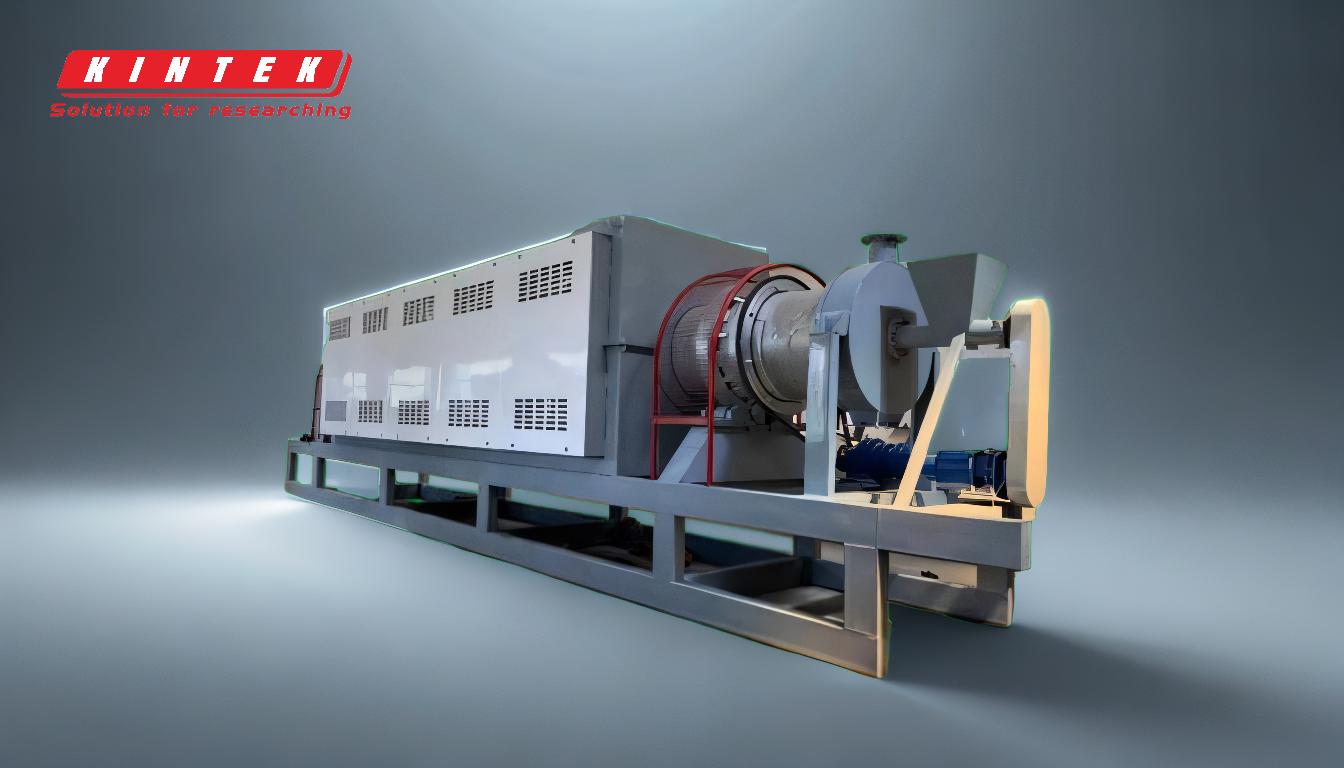Pyrolysis is a thermochemical decomposition process that breaks down organic materials at elevated temperatures in the absence of oxygen. It is categorized into three main classes: slow pyrolysis, fast pyrolysis, and flash pyrolysis. Each class differs in terms of heating rates, residence times, and the types of products generated. Slow pyrolysis focuses on char production, fast pyrolysis maximizes liquid bio-oil, and flash pyrolysis is characterized by extremely rapid heating rates, producing gases and bio-oil. Additionally, other specialized pyrolysis processes, such as carbonization and gasification, further expand the applications and outputs of pyrolysis technologies.
Key Points Explained:

-
Slow Pyrolysis:
- Definition: Slow pyrolysis involves heating organic materials at relatively low heating rates (typically 0.1–1°C/s) and long residence times (minutes to hours).
-
Key Characteristics:
- Focuses on the production of solid char.
- Minimizes liquid and gas yields.
- Operates at lower temperatures (300–500°C).
-
Applications:
- Used for charcoal production.
- Modifies solid materials for use in carbon-based products.
-
Products:
- Char (primary product).
- Small amounts of bio-oil and syngas.
-
Fast Pyrolysis:
- Definition: Fast pyrolysis is characterized by high heating rates (10–200°C/s) and short residence times (a few seconds).
-
Key Characteristics:
- Maximizes the production of liquid bio-oil.
- Requires rapid cooling of vapors to condense bio-oil.
- Operates at moderate temperatures (400–600°C).
-
Applications:
- Most common method for bio-oil production.
- Used in renewable energy and chemical feedstock applications.
-
Products:
- Bio-oil (primary product).
- Char and syngas as by-products.
-
Flash Pyrolysis:
- Definition: Flash pyrolysis is an ultra-rapid process with extremely high heating rates (>1000°C/s) and very short residence times (less than a second).
-
Key Characteristics:
- Produces high yields of gases and bio-oil.
- Requires advanced reactor designs to achieve rapid heating.
- Operates at high temperatures (500–1000°C).
-
Applications:
- Used for high-efficiency bio-oil and gas production.
- Suitable for advanced biofuel and chemical synthesis.
-
Products:
- Gases and bio-oil (primary products).
- Minimal char production.
-
Other Specialized Pyrolysis Processes:
-
Carbonization:
- A form of slow pyrolysis focused on producing high-carbon-content char.
- Used in charcoal and activated carbon production.
-
Gasification:
- A process that partially oxidizes biomass to produce syngas (a mixture of hydrogen and carbon monoxide).
- Operates at higher temperatures (700–1200°C) and is used for energy generation and chemical synthesis.
-
Methane Pyrolysis:
- Decomposes methane into hydrogen and solid carbon.
- Emerging as a clean hydrogen production method.
-
Hydrous Pyrolysis:
- Conducted in the presence of water, often used in geochemical studies and oil shale processing.
-
Thermal Depolymerization:
- Breaks down organic waste into crude oil-like substances.
- Used in waste-to-energy applications.
-
Carbonization:
-
Comparison of Pyrolysis Classes:
-
Heating Rates:
- Slow pyrolysis: Low (0.1–1°C/s).
- Fast pyrolysis: High (10–200°C/s).
- Flash pyrolysis: Extremely high (>1000°C/s).
-
Residence Times:
- Slow pyrolysis: Long (minutes to hours).
- Fast pyrolysis: Short (a few seconds).
- Flash pyrolysis: Very short (less than a second).
-
Primary Products:
- Slow pyrolysis: Char.
- Fast pyrolysis: Bio-oil.
- Flash pyrolysis: Gases and bio-oil.
-
Applications:
- Slow pyrolysis: Charcoal, carbon materials.
- Fast pyrolysis: Renewable energy, chemical feedstocks.
- Flash pyrolysis: Advanced biofuels, chemical synthesis.
-
Heating Rates:
-
Factors Influencing Pyrolysis Outcomes:
-
Temperature:
- Determines the distribution of solid, liquid, and gaseous products.
-
Heating Rate:
- Affects the reaction kinetics and product yields.
-
Residence Time:
- Influences the extent of thermal decomposition.
-
Feedstock Composition:
- Different materials (e.g., wood, agricultural waste, plastics) produce varying product distributions.
-
Temperature:
By understanding these classes and their unique characteristics, purchasers and engineers can select the appropriate pyrolysis technology based on the desired products and applications.
Summary Table:
| Pyrolysis Type | Heating Rate | Residence Time | Primary Products | Applications |
|---|---|---|---|---|
| Slow Pyrolysis | 0.1–1°C/s | Minutes to hours | Char | Charcoal, carbon materials |
| Fast Pyrolysis | 10–200°C/s | A few seconds | Bio-oil | Renewable energy, chemical feedstocks |
| Flash Pyrolysis | >1000°C/s | Less than a second | Gases and bio-oil | Advanced biofuels, chemical synthesis |
Ready to choose the right pyrolysis process for your project? Contact our experts today for tailored solutions!










